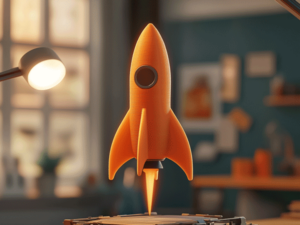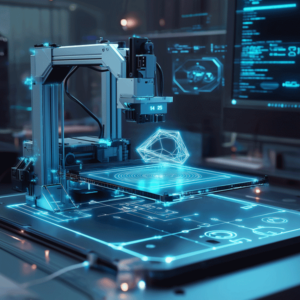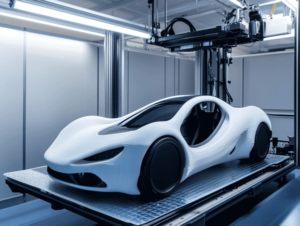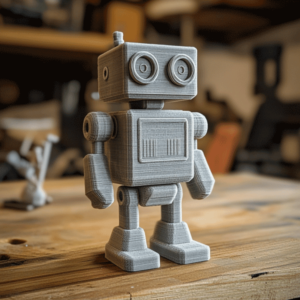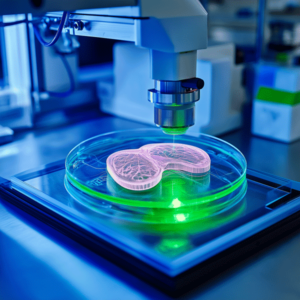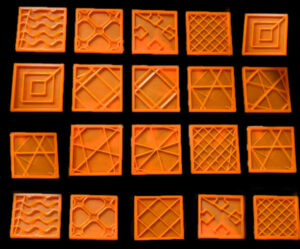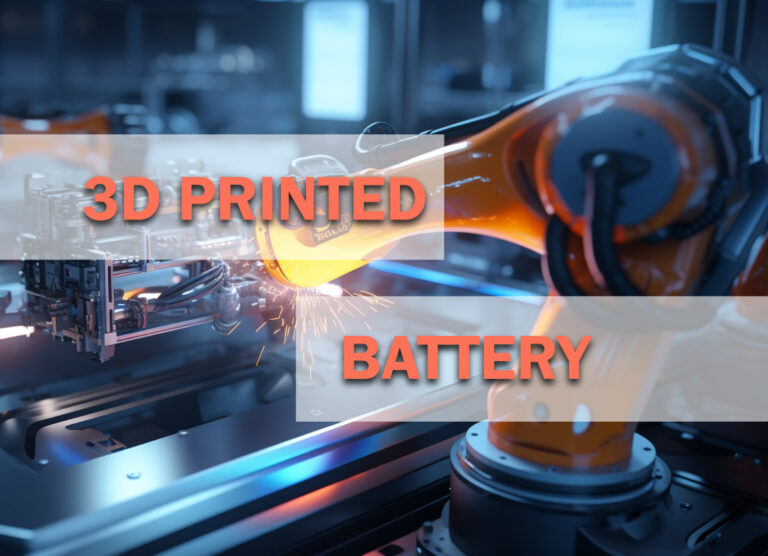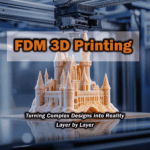Future Foods with 3D Printing: Sustainable & Innovative Nutrition
With the advancement of technology and the increasing awareness among consumers, healthy eating habits and the supply of healthy food have been rapidly increasing. However, factors such as rapid population growth, climate change, and limited resources have created certain obstacles in the supply of novel foods. In particular, due to the significant population growth expected by 2050, some authorities even consider the possibility of food shortages.
In addition to all these factors, biodiversity loss and greenhouse gas emissions have led to negative consequences in international supply chains, further increasing the demand for innovative foods.
These novel foods, which are referred to as new-generation foods, are produced by incorporating new ingredients and new production techniques, including food printing, into foods traditionally produced through conventional methods. According to the study Multi-indicator sustainability assessment of global food systems by Chaudhary, Gustafson, and Mathys (2018), published in Nature Communications, these novel foods will place greater emphasis on sustainability in food supply chains, alternative food sources, and the personalization of food products, in addition to health and nutrition.
3D Printing as a Novel Food Production Technology
As one of the next-generation production techniques, 3D printing has revolutionized manufacturing paradigms across various industries, including the food sector, where it is driving innovative approaches. In the production of novel foods, 3D printing technology offers numerous advantages.
Let’s explore the role of 3D bioprinting in the food industry, particularly in the production of novel foods, based on the scientific study “Utilizing 3D Printing to Create Sustainable Novel Food Products with Innovative Ingredients”, published in the journal Innovative Food Science and Emerging Technologies.
According to the study, 3D food printing offers several benefits to the food sector, including:
- Personalized designs,
- Digital nutrient matching,
- High-value utilization of food by-products,
- Expansion of food ingredient sources.
Sustainable 3D Bioprinting for Novel Food Products
Innovative source food ingredients are novel components integrated into food production processes through advanced technologies. These ingredients include insects, algae, and by-products from the food processing industry.
Today, it is a common practice to process certain ingredients, particularly algae and insect powders, using additive manufacturing technology and incorporate them into products such as cookies, waffles, and other snacks as alternative protein sources. Let’s take a closer look at the applications of 3D printing in this field!
Insect-Based Foods
Edible insects (😨) are rich in protein and serve as an affordable alternative to animal proteins in some countries. However, while certain insect species or their derived components are suitable for 3D printing, others may become unstable after the printing process.
For instance, bee larva and earthworm gels have been found to lack the appropriate fluidity for 3D printing, whereas grasshopper and scorpion gels have exhibited greater stability in 3D printing applications.
Additionally, there are new applications where insect flour is mixed with wheat flour and processed using 3D printing technology.
Algae-Based Foods
Microalgae, due to their rich nutritional and bioactive compound content, are widely used to produce high-nutrient foods. In the food industry, they are commonly available in powder and tablet form, allowing for the development of customized food products.
In a previous application, antioxidants extracted from algae were encapsulated to make them suitable for 3D printing, and 3D-printed cookies with antioxidant functionality were successfully produced.
High-Value Utilization of Food Waste
Food processing industries worldwide generate significant amounts of nutrient-rich food waste. The reintegration of these food wastes into the food ecosystem through 3D printing offers not only environmental benefits, such as reducing pollution, but also economic advantages.
Previous studies have shown that certain food wastes, which contain high amounts of insoluble proteins and fibers, can undergo specific processing techniques to develop 3D-printable food ink.
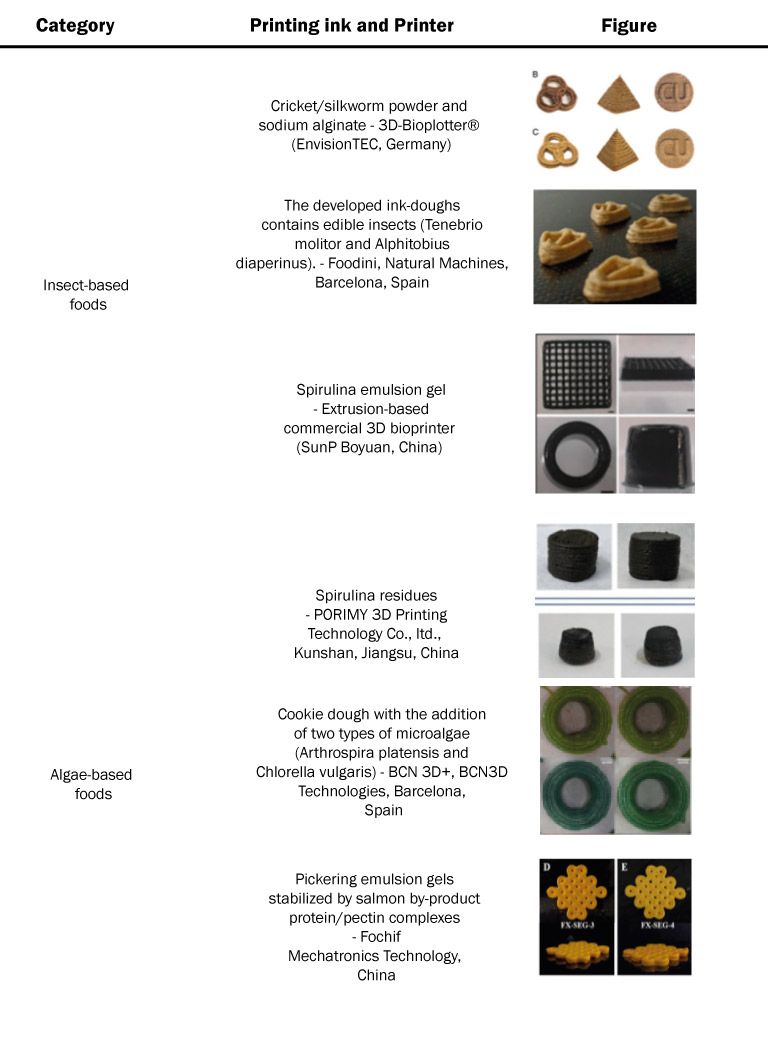
Summary of 3D Food Printing Impact on the Sustainable Development Goals
No Poverty
- 3D food printing could compete with traditional food production, reducing land dependency.
- Enables cost-effective and simpler repairs through localized, low-cost production of replacement parts.
Zero Hunger
- Reduces waste in food manufacturing, fosters culinary innovation, and allows customization of food products.
Good Health and Well-being
- Enhances health by providing nutritious food options, improving hospital patient nutrition.
Affordable and Clean Energy
- Potential to decrease greenhouse gas emissions by 130.5–525.5 Mt by 2025.
- Enhances sustainability through the reuse of food production waste.
Decent Work and Economic Growth
- Processing food ingredients in different forms creates new market opportunities.
- Promotes social acceptance and wider adoption of 3D food printing.
Sustainable Cities and Communities
- Empowers individuals to become food manufacturers, improving efficiency in food production and delivery.
- Responsible Consumption and Production
- Provides environmental advantages through efficient resource use, waste handling, and pollution control.
- Climate Action
- Produces food without emitting harmful pollutants.
- Streamlines the food supply chain, increasing responsiveness.
- Partnerships for the Goals
- Collaboration with food science experts enhances meal accessibility for individuals with swallowing difficulties.
History of 3D and 4D Printing in Food Additive Production
2010
- 3D chocolate printer developed in the UK.
2014
- WO 2014US39170 (USA): Patent for manufacturing food applicable to 3D printing.
2016
- The concept of 4D food printing emerged.
- WOCN2019/123526 (China): Patent for the spontaneous color change of blueberry anthocyanins.
2018
- CNCN 2018093127 (China): Patent for 3D printing of ready-to-eat food.
2019
- US17032468 (China): Patent for microwave-coupled 3D printing used in food design and production.
2020
- US 16907372 (USA): Patent for chocolate-based ink for 3D printing.
- KR 20210082096 (Seoul): 3D printing for plant-based meat.
2021
- WOCN2019/123526 (China): Reaffirmed the patent for the spontaneous color change of blueberry anthocyanins.
2022
- US20200985463P (USA): Patent for a bioprinter print head.
2023
- Zhongxiang Fang developed 4D-printed insect food with colors that change with pH.
References
Feng, M., Zhang, M., Bhandari, B., Li, C., & Mujumdar, A. S. (2025). Utilizing 3D printing to create sustainable novel food products with innovative ingredients. Innovative Food Science and Emerging Technologies, 99, 103873. https://doi.org/10.1016/j.ifset.2024.103873
Chaudhary, A., Gustafson, D., & Mathys, A. (2018). Multi-indicator sustainability assessment of global food systems. Nature Communications, 9, 848.
Hai Alami, A., Ghani Olabi, A., Khuri, S., Aljaghoub, H., Alasad, S., Ramadan, M., & Ali Abdelkareem, M. (2024). 3D printing in the food industry: Recent progress and role in achieving sustainable development goals. Ain Shams Engineering Journal, 15(2), Article 102386.
Lim, W. S., Lim, N., Park, H. J., & Lee, M. H. (2024). Emulsion gel-based 3D printable fat analogue prepared with pea protein isolate. Journal of Food Engineering, 364.

